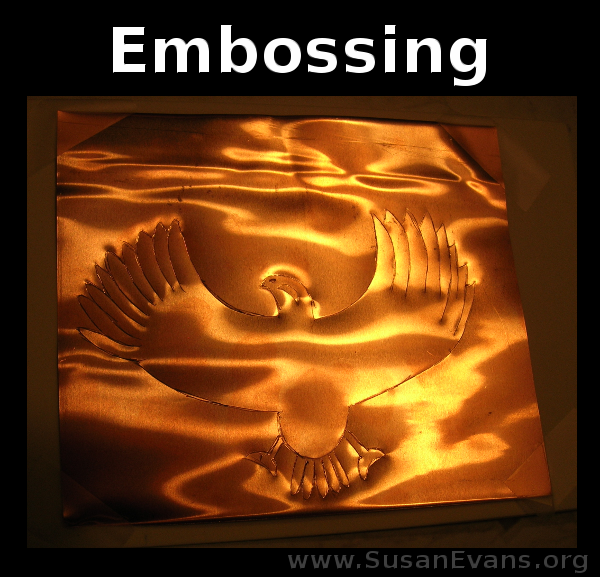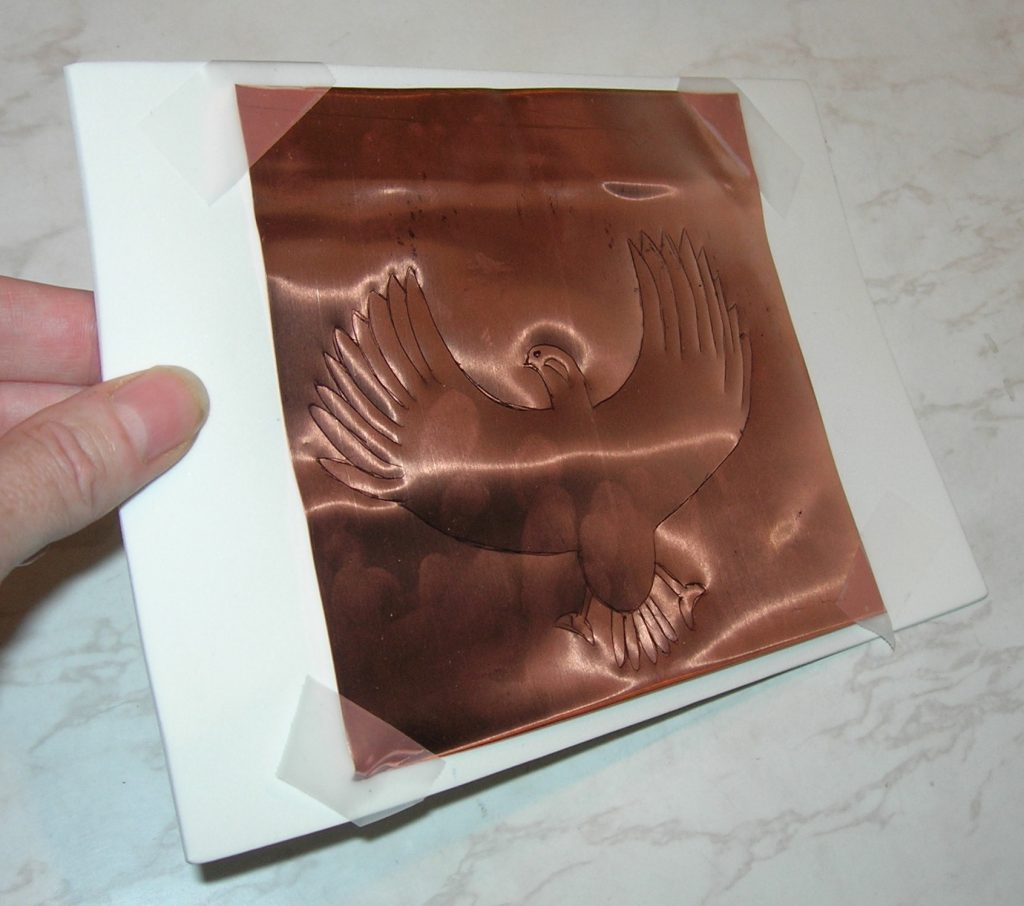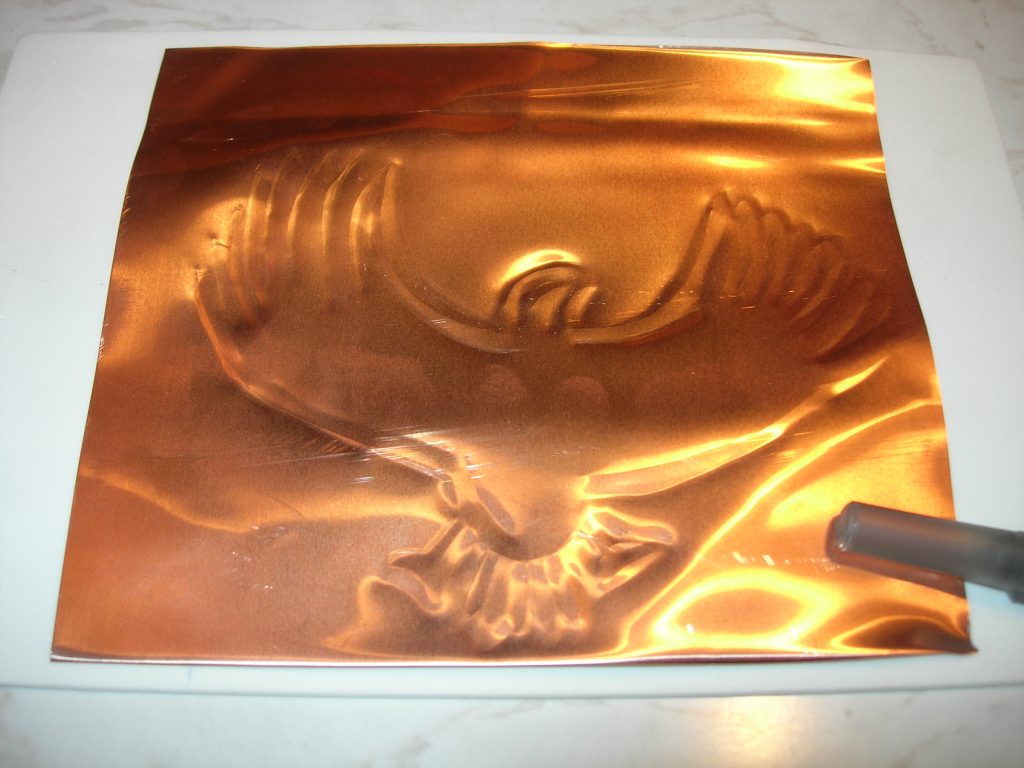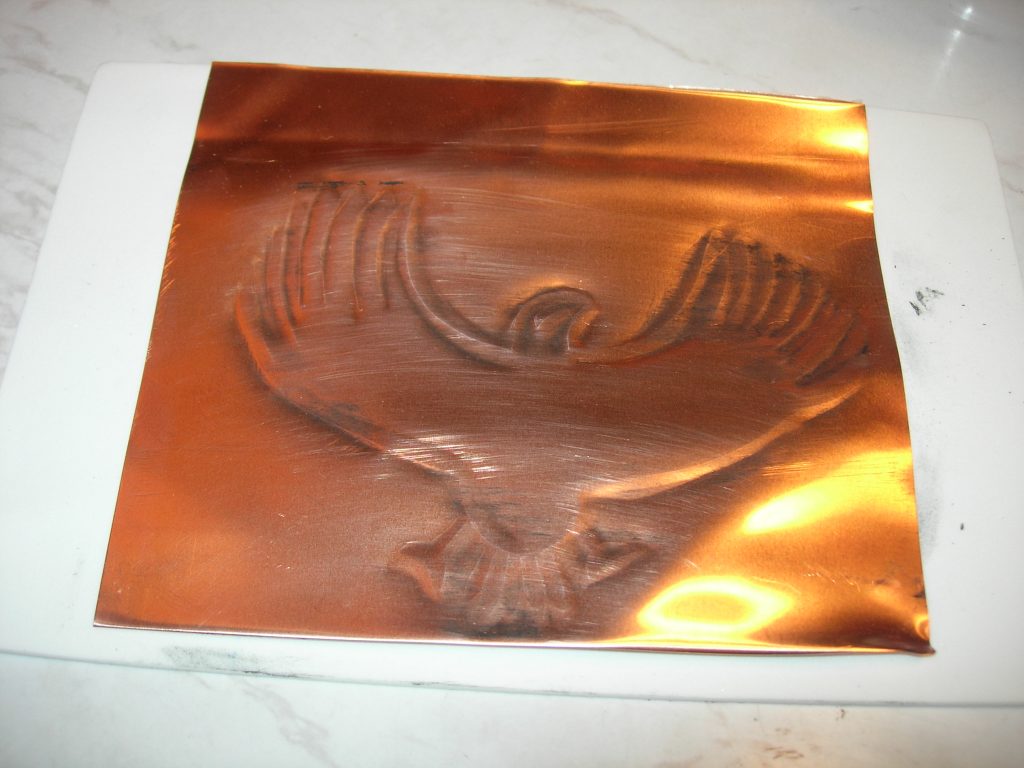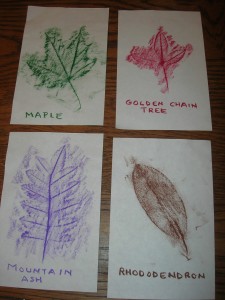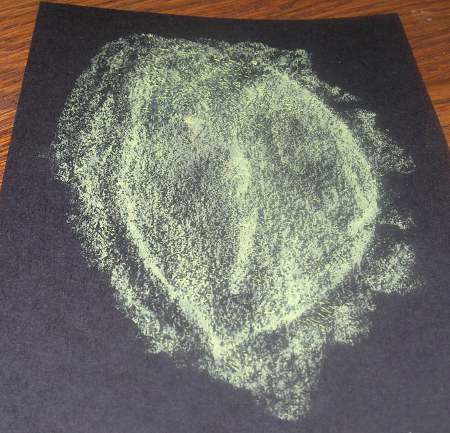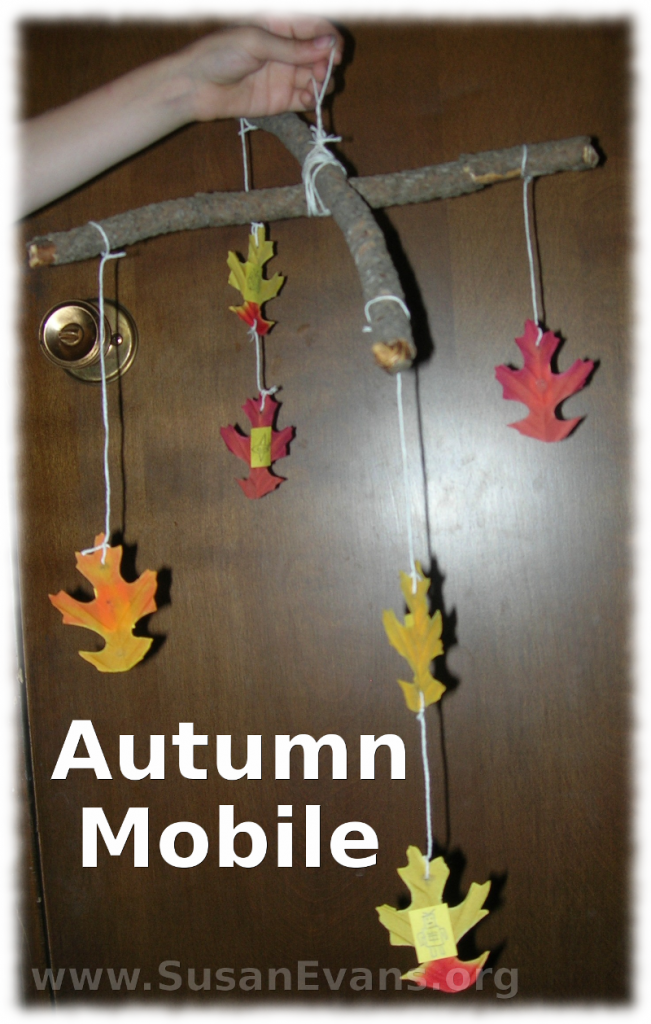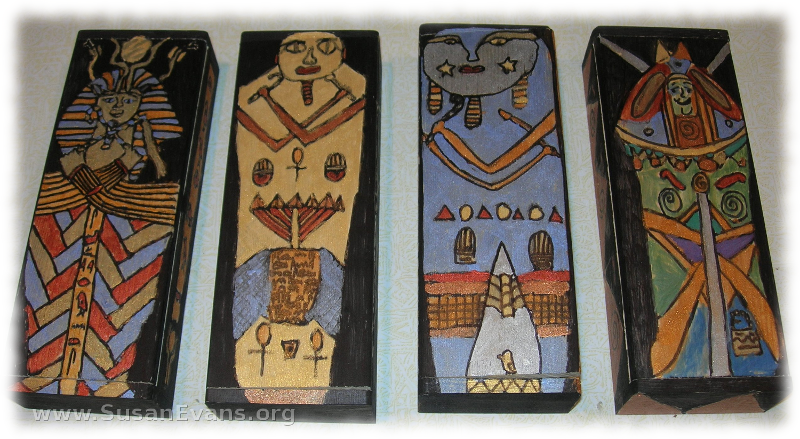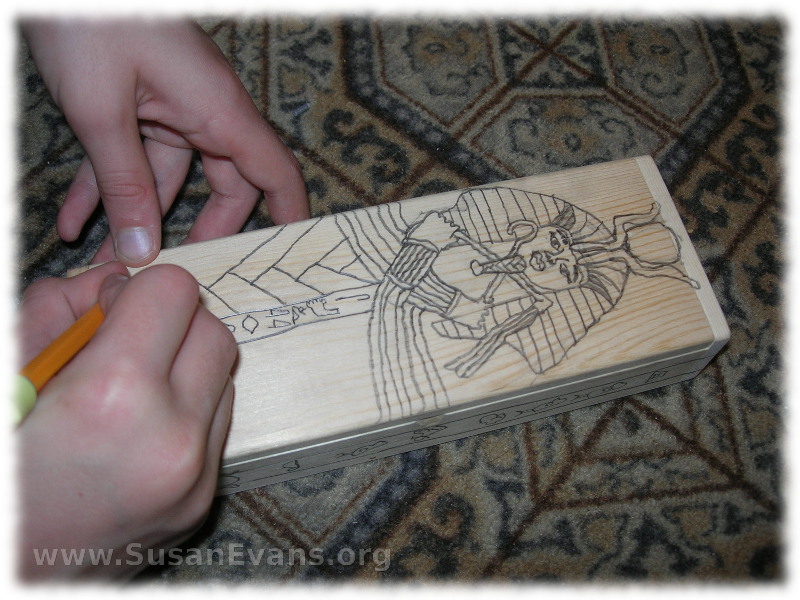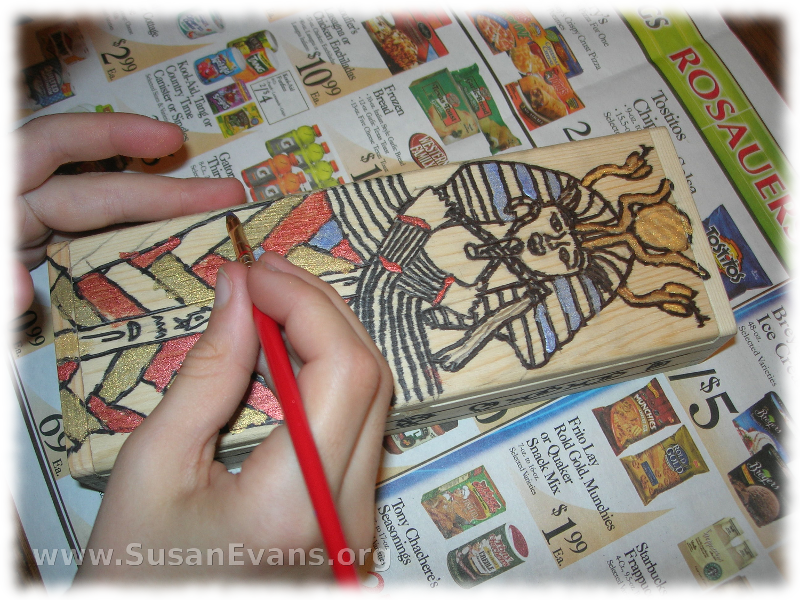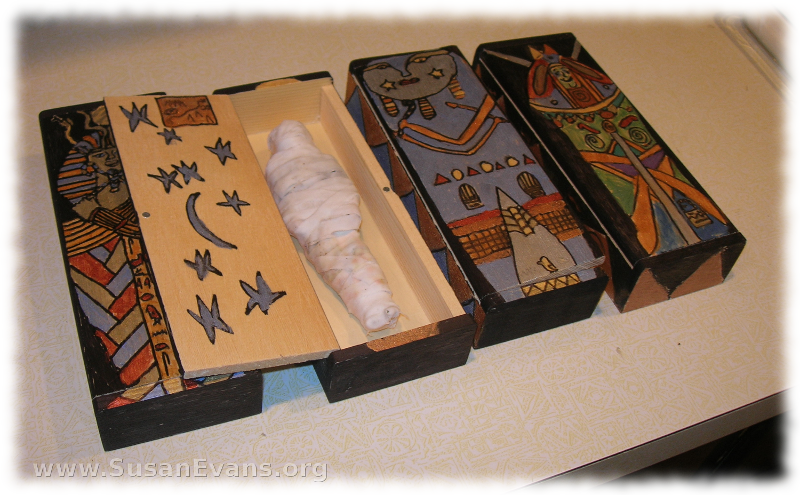Embossing is harder than it looks. Of course, the copper sheeting from a craft supply store is probably much thinner than the stuff I ordered over the internet. First I used kitchen shears to cut the metal sheeting to the size I wanted, since it was in a roll. Then I taped the copper sheet to a piece of craft foam. You can use anything, even a stack of papers, to make it soft on the other side.
Then I used a ball-point pen to draw an Egyptian design onto the copper. I drew a large bird with wings, similar to many Egyptian necklaces. I chose the design because of the feathers, because I thought raised feathers would be a cool effect.
When I was finished drawing with a ball-point pen, I took the tape off and turned it over. I used the edge of the cap of the pen (attached to the pen) to press down on both sides of each line. Basically, you’re helping the embossing to be more pronounced. When I was finished, I took black paint and brushed it over the whole thing. I was expecting something spectacular, but it was ho-hum. In fact, none of the ink remained in the grooves. So that effect didn’t work at all. Maybe I used the wrong paint. The YouTube videos say to use black ink, but I don’t have any, and I don’t want to buy any because I have no use for it. Embossing equipment was also recommended in those videos. Given my negative experience, I have no desire to shell out money for something that is frustrating.
I recommend using a washed-out pie tin from the store for your first attempt at embossing. That way you will be more familiar with the process and decide whether it’s worth it to spend money on it. I found many how-to videos on YouTube, many of which spoke about making embossed metal into Christmas ornaments. That would be another idea to explore. Also, it seems like if you got an embossing kit from the craft store, it might be super easy to do after all. (The cap of the pen, for example, was way too fat to puff out the other side of the metal like I was trying to do.) But for now, I give the whole experience a thumbs down.
Update: We tried it again with an embossing craft kit, and we loved it! It was way better than this thicker copper sheeting. You can see our new embossed crafts here: Embossed Christmas Ornaments.
